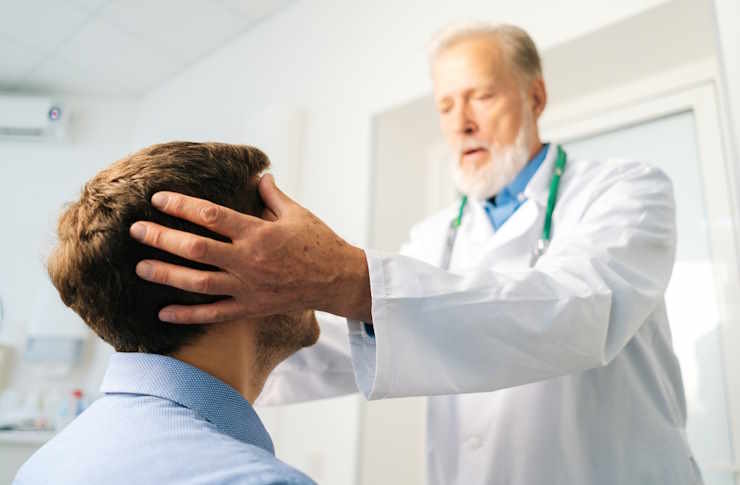What Life with Emphysema Can Look Like - A Comprehensive Guide
Living with emphysema represents a significant health challenge that affects millions of Americans. This chronic lung condition, which forms part of chronic obstructive pulmonary disease (COPD), gradually damages the air sacs in your lungs, making breathing increasingly difficult. Understanding what life with emphysema can look like helps patients and their families prepare for the journey ahead while exploring available treatment options that can improve quality of life and slow disease progression.

Understanding What Life with Emphysema Can Look Like Daily
What life with emphysema can look like varies significantly depending on the stage of the disease and individual circumstances. In early stages, you might notice subtle changes like occasional shortness of breath during physical activities or a persistent cough. As the condition progresses, daily activities that once seemed effortless become challenging endeavors requiring careful planning and pacing.
Many people with emphysema find themselves adjusting their routines to accommodate their breathing limitations. Simple tasks like climbing stairs, carrying groceries, or even getting dressed may require frequent breaks. The fatigue associated with working harder to breathe often affects sleep patterns, social activities, and overall energy levels throughout the day.
Recognizing Emphysema Signs in Early Stages
Emphysema signs often develop gradually, making early detection challenging. The most common initial sign is shortness of breath, particularly during physical exertion. You might notice that activities you previously performed without difficulty now leave you breathless or require rest periods.
Other early emphysema signs include a chronic cough that may or may not produce mucus, wheezing sounds when breathing, and reduced exercise tolerance. Some people experience chest tightness or a feeling that they cannot get enough air into their lungs. These signs often worsen over time, especially if smoking continues or exposure to lung irritants persists.
Identifying Advanced Emphysema Symptoms
Emphysema symptoms become more pronounced as the disease progresses. Advanced symptoms include severe shortness of breath even during rest, frequent respiratory infections, and significant weight loss due to the increased energy required for breathing. Many patients develop a characteristic barrel-shaped chest as their lungs become overinflated.
Additional emphysema symptoms in advanced stages may include bluish discoloration of the lips or fingernails due to low oxygen levels, morning headaches from carbon dioxide retention, and ankle swelling. Sleep disturbances become common as breathing difficulties interfere with rest, leading to daytime fatigue and reduced cognitive function.
Assessing Indicators of Emphysema Risk
Indicators of emphysema risk help identify individuals who should seek medical evaluation and consider preventive measures. The primary risk factor remains cigarette smoking, with long-term smokers facing the highest risk. However, exposure to secondhand smoke, air pollution, chemical fumes, and dust also contribute to disease development.
Genetic factors represent another category of indicators of emphysema risk. Alpha-1 antitrypsin deficiency, a hereditary condition, significantly increases emphysema risk even in non-smokers. Age also plays a role, with most cases developing after age 40. Individuals with a family history of COPD or those who experienced frequent childhood respiratory infections may have elevated risk levels.
Understanding the Emphysema Diagnosis Process
Emphysema diagnosis involves multiple diagnostic tools and assessments to confirm the condition and determine its severity. The process typically begins with a detailed medical history and physical examination, where healthcare providers listen for abnormal lung sounds and assess breathing patterns.
Pulmonary function tests form the cornerstone of emphysema diagnosis, measuring how much air your lungs can hold and how quickly you can exhale. Chest X-rays and CT scans provide detailed images of lung structure, revealing characteristic changes associated with emphysema. Blood tests may check oxygen and carbon dioxide levels, while additional tests might rule out other conditions with similar symptoms.
Treatment Options and Associated Costs
Emphysema treatment encompasses various approaches, from medications to advanced therapies, each with different cost implications. Understanding these options helps patients make informed decisions about their care.
| Treatment Type | Provider/Option | Estimated Monthly Cost |
|---|---|---|
| Bronchodilator Medications | Generic versions | $50-150 |
| Inhaled Corticosteroids | Brand-name inhalers | $200-400 |
| Oxygen Therapy | Home oxygen concentrator | $200-500 |
| Pulmonary Rehabilitation | Medicare-covered programs | $100-300 copay |
| Lung Volume Reduction Surgery | Major medical centers | $40,000-80,000 total |
Prices, rates, or cost estimates mentioned in this article are based on the latest available information but may change over time. Independent research is advised before making financial decisions.
Living Well with Emphysema Management
Despite the challenges, many people with emphysema maintain fulfilling lives through proper management and treatment. Pulmonary rehabilitation programs teach breathing techniques, exercise strategies, and energy conservation methods that significantly improve daily functioning. Medications like bronchodilators help open airways, while oxygen therapy ensures adequate oxygen levels for those with severe disease.
Lifestyle modifications play a crucial role in emphysema management. Quitting smoking remains the most important step, as continued smoking accelerates lung damage. Regular exercise, within individual limitations, helps maintain muscle strength and cardiovascular health. Proper nutrition supports overall health, while vaccinations prevent respiratory infections that could worsen symptoms.
Living with emphysema requires ongoing medical care, lifestyle adjustments, and often significant emotional adaptation. However, with proper treatment and support, many patients successfully manage their symptoms and maintain meaningful, active lives. Early diagnosis and intervention provide the best outcomes, emphasizing the importance of recognizing symptoms and seeking medical attention promptly. Working closely with healthcare providers ensures access to the most appropriate treatments and support services for individual needs.
This article is for informational purposes only and should not be considered medical advice. Please consult a qualified healthcare professional for personalized guidance and treatment.




